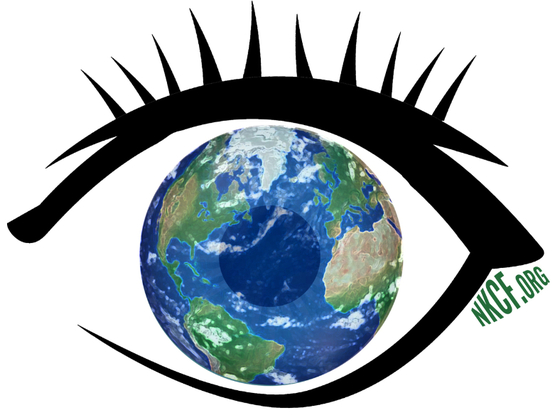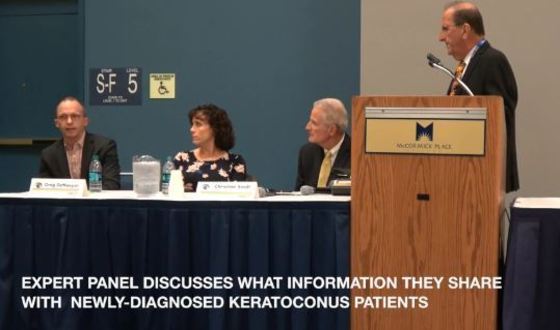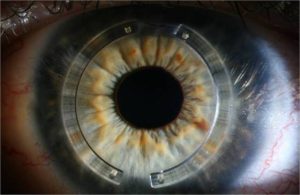December 2017
Eye Drop Treatment for Keratoconus?
Iveena Delivery Systems, a Salt Lake City-based biotech, was awarded a $225,000 grant from the National Eye Institute to expand their research into a topic treatment for keratoconus.
Read more here.

World KC Day: Raising International Awareness
World KC Day went off with a bang! People around the globe used the day to brighten the spotlight on KC.
 NKCF established this annual event last year, and the response has been great from patients, families and professionals.
NKCF established this annual event last year, and the response has been great from patients, families and professionals.
Many doctors’ offices posted information about KC on social media, while others held screenings or informational events. Dr. Melanie Frogozo, OD of the Contact Lens Institute of San Antonio sponsored a breakfast for her KC patients and led a discussion about the disease. Optometry students at Western University in Pomona, CA and the University of Missouri-St. Louis planned their own World KC Day celebrations. In Australia, Eyes Matter AU held screening and informational sessions. We are happy to see our partners continue to educate and provide support to those living with KC.
Our KC Map grew to nearly 500 entries of patients, family members and friends. Each person on the map helps to build a bridge and strengthen the KC community. The expanding map is evidence you are not alone in your journey.
Even though World KC Day 2017 has passed, visit worldkcday.com to see the World KC Map and KC gallery. Add your name to the map and send us a selfie for our gallery. We can’t wait to see what’s in store for World KC Day 2018. How will you spread the word?
Tommy Pham – NKCF Ambassador
The 2017 Ambassador for World KC Day was St. Louis Cardinal outfielder Tommy Pham. If you have not heard his story about achieving success at the very highest levels of professional sport while living with keratoconus, prepare to be inspired. NKCF has produced 2 short videos of Dr. Ed Bennett, OD, Assistant Dean at the Univ. of Missouri- St. Louis College of Optometry talking with Pham. Bennett sees a parallel to the movie, The Rookie, where a high school chemistry teacher makes it to the big leagues. Bennett asks, “Isn’t the story of a young man who battles serious vision problems to become a professional baseball player just as improbable, and also worthy of the big screen?”
To watch Tommy Pham’s NKCF videos, click here and here.
Follow our NKCF Ambassador at @TPhamLV.

NKCF Goes to Washington

A Congressional briefing entitled, Spearheading KC Research: A Quest for Novel Treatments was held on Nov. 7 in Washington, DC. Staffers from the offices of senators and representatives were invited to a lunch meeting where they were educated about keratoconus in anticipation of World KC Day.
KC patient advocate Rachel Dungan, Dr. Dimitrios Karamichos, PhD, a researcher from the Dean McGee Eye Institute at the University of Oklahoma, and NKCF Director Mary Prudden addressed the audience. The event was sponsored by the Alliance for Eye and Vision Research.
To learn more, read the press release here.
KC Roundtable
 Watch our short video with highlights of the Roundtable sponsored by NKCF at the annual American Academy of Optometry meeting in Chicago. Moderator for the session was Dr. Robert Gordon, OD of Western University School of Optometry, Pomona, CA, and panelists were Dr. Greg DeNaeyer, OD of Arena Eye Specialists in Columbus, OH, Dr. Christine Sindt, OD, of University of Iowa, and Dr. Ed Bennett, OD of University of Missouri-St. Louis College of Optometry. In this clip, the panel shares what they tell newly diagnosed patients.
Watch our short video with highlights of the Roundtable sponsored by NKCF at the annual American Academy of Optometry meeting in Chicago. Moderator for the session was Dr. Robert Gordon, OD of Western University School of Optometry, Pomona, CA, and panelists were Dr. Greg DeNaeyer, OD of Arena Eye Specialists in Columbus, OH, Dr. Christine Sindt, OD, of University of Iowa, and Dr. Ed Bennett, OD of University of Missouri-St. Louis College of Optometry. In this clip, the panel shares what they tell newly diagnosed patients.
Do you remember when you were first diagnosed with KC? What was the most useful tip you received? Follow the link below to share your story.
CXL News: Insurance Update
 2017 concludes the first full year of corneal crosslinking (CXL) as an FDA approved treatment to halt the progression of keratoconus. Unfortunately, as many patients came to realize, FDA approval does not automatically confer insurance coverage. Many industry experts opined that it would take 3-4 years before payers would cover the costs associated with CXL. Instead, there has been remarkable movement on the part of many insurers during the first year of available treatment. The year ends with 28 state or regional insurers covering this treatment for progressive keratoconus.
2017 concludes the first full year of corneal crosslinking (CXL) as an FDA approved treatment to halt the progression of keratoconus. Unfortunately, as many patients came to realize, FDA approval does not automatically confer insurance coverage. Many industry experts opined that it would take 3-4 years before payers would cover the costs associated with CXL. Instead, there has been remarkable movement on the part of many insurers during the first year of available treatment. The year ends with 28 state or regional insurers covering this treatment for progressive keratoconus.
• Click to see this list now.
• For an up-to-date list, visit www.livingwithkeratoconus.com.
It is important to read your insurance company’s policies regarding coverage of CXL. They might require documentation of disease progression, or certain diagnostic tests in order to qualify for coverage; many insurers will only cover the epi-off protocol. Together you and your doctor should understand what is required in order for this to be a covered service.
KC & Down Syndrome
NKCF is helping to spread the word about the high incidence of KC and ocular allergies in the Down syndrome community. According to Dr. Marjan Farid, MD, associate clinical professor of ophthalmology at University of California, Irvine, “crosslinking is essential in cases where even the slightest progression is seen.”
Read more here.

Is There a KC Gene?
In a recent paper, scientists from the University of Antwerp offered a detailed look at current genetic analysis techniques and considered if they could be applied to finding a genetic basis for KC.
They concluded KC appears to be a disease continuum, with a very small percentage of patients affected by a single gene mutation, and many more born with a number of small genetic variations in their DNA that alone may not be enough to cause KC, but the cumulative effect of these variations, along with environmental factors, result in complex disease development. Learn more here.

Humans of Keratoconus – Amritpal
Humans of Keratoconus is our patient profile, a way to invite people with keratoconus to share their KC journey.
Meet Amritpal (Amri for short), college student, photographer, CXL recipient.
Read his patient spotlight here!

Eye Rubbing Results
Did you participate in our survey about eye rubbing and KC? 167 readers responded to our poll, and we collected some very insightful comments: 56.3% of you believe that eye rubbing makes KC worse; 31.1% believe eye rubbing can cause KC, and 12.6% have the opinion there is no connection between KC and eye rubbing. Thank you for taking the time to reply! Your opinions are shared with researchers and clinicians. Read the comments here. And please participate in the quick survey below.

40-Second Survey
Thank you for participating in our KC mini-survey. This month we are interested in learning more about intrastromal corneal ring segments or Intacs. Answer these four questions about Intacs and we’ll share your answers in our next issue.

Our New Look
We have redesigned our NKCF.org website and this NKCF E-Update to better reflect our association with the University of California – Irvine. We hope you approve!
Calendar
 SAVE THE DATE!
SAVE THE DATE!
On Saturday, February 10, NKCF will host a KC Family Symposium at the Gavin Herbert Eye Institute in Irvine, CA. If you will be in Southern California that weekend, please make plans to attend. More information will soon be available on Facebook and the NKCF website. Look for your e-invite soon.
Support Makes Things Happen
As the year ends, please consider making an on-line donation to NKCF. Remember donations to the UCI Foundation for NKCF are used exclusively to support our programs.
If you prefer to send a check, payable to UCI Foundation
to support NKCF, please mail it to:
NKCF – GHEI
850 Health Sciences Rd, 3rd Floor
Irvine, CA 92697
Wishing you a happy holiday season
from all of us here at NKCF

This NKCF E- Update is sent to you compliments of the National Keratoconus Foundation, a program of the Gavin Herbert Eye Institute at the University of California, Irvine.
You can contact us with your general questions about keratoconus at info@ncf.org or call us at 800-521-2524.
If you have any specific questions about your diagnosis, treatment, or outcomes, please contact your eyecare professional.


